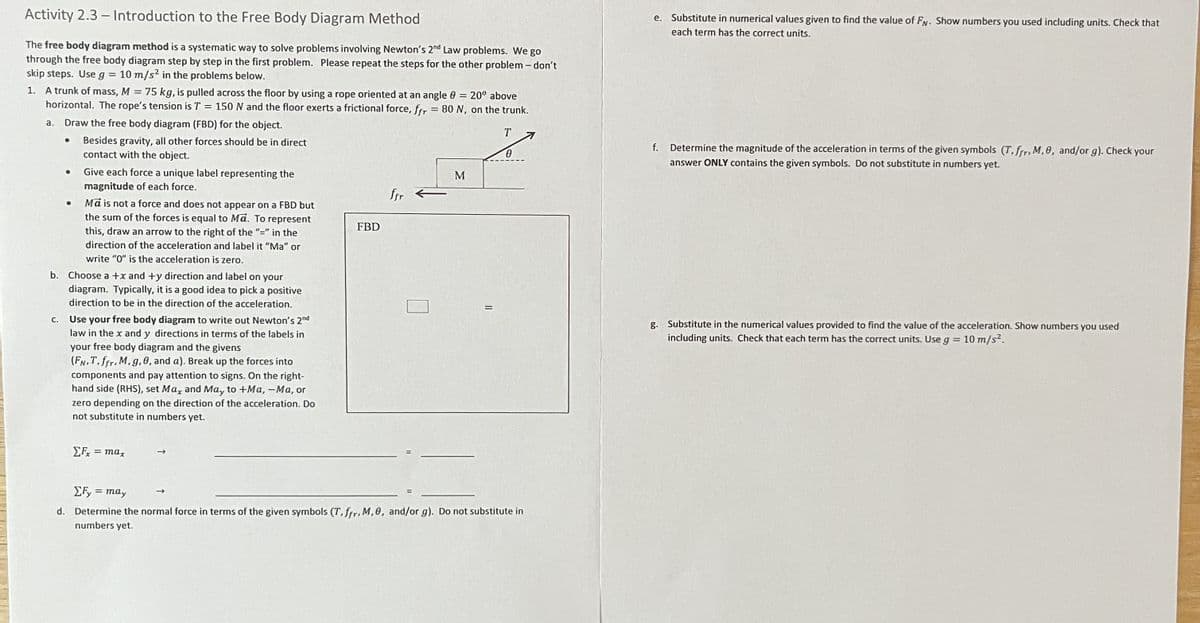Activity 2.3- Introduction to the Free Body Diagram Method The free body diagram method is a systematic way to solve problems involving Newton's 2nd Law problems. We go through the free body diagram step by step in the first problem. Please repeat the steps for the other problem - don't skip steps. Use g = 10 m/s² in the problems below. 1. A trunk of mass, M = 75 kg, is pulled across the floor by using a rope oriented at an angle = 20° above horizontal. The rope's tension is T = 150 N and the floor exerts a frictional force, frr = 80 N, on the trunk. a. Draw the free body diagram (FBD) for the object. T • Besides gravity, all other forces should be in direct contact with the object. • Give each force a unique label representing the magnitude of each force. • Ma is not a force and does not appear on a FBD but the sum of the forces is equal to Mä. To represent this, draw an arrow to the right of the "=" in the direction of the acceleration and label it "Ma" or write "0" is the acceleration is zero. b. Choose a +x and +y direction and label on your diagram. Typically, it is a good idea to pick a positive direction to be in the direction of the acceleration. c. Use your free body diagram to write out Newton's 2nd law in the x and y directions in terms of the labels in your free body diagram and the givens (FN.T.ffr. M.g.0, and a). Break up the forces into components and pay attention to signs. On the right- hand side (RHS), set Ma, and Ma, to +Ma, -Ma, or zero depending on the direction of the acceleration. Do not substitute in numbers yet. WF, = max WF, = may FBD ffr M 0
Plane Trusses
It is defined as, two or more elements like beams or any two or more force members, which when assembled together, behaves like a complete structure or as a single structure. They generally consist of two force member which means any component structure where the force is applied only at two points. The point of contact of joints of truss are known as nodes. They are generally made up of triangular patterns. Nodes are the points where all the external forces and the reactionary forces due to them act and shows whether the force is tensile or compressive. There are various characteristics of trusses and are characterized as Simple truss, planar truss or the Space Frame truss.
Equilibrium Equations
If a body is said to be at rest or moving with a uniform velocity, the body is in equilibrium condition. This means that all the forces are balanced in the body. It can be understood with the help of Newton's first law of motion which states that the resultant force on a system is null, where the system remains to be at rest or moves at uniform motion. It is when the rate of the forward reaction is equal to the rate of the backward reaction.
Force Systems
When a body comes in interaction with other bodies, they exert various forces on each other. Any system is under the influence of some kind of force. For example, laptop kept on table exerts force on the table and table exerts equal force on it, hence the system is in balance or equilibrium. When two or more materials interact then more than one force act at a time, hence it is called as force systems.
Hi, I am lookiong for help with this problem.

Step by step
Solved in 6 steps with 5 images









